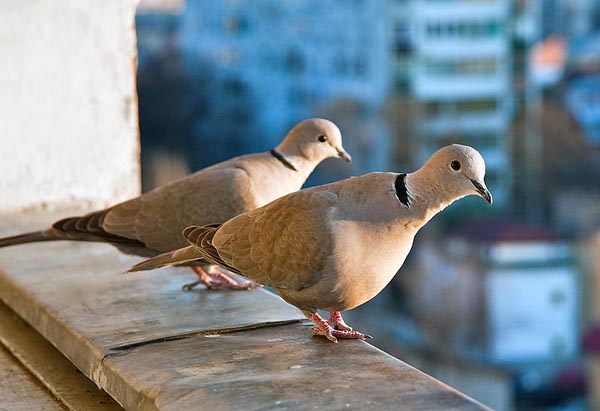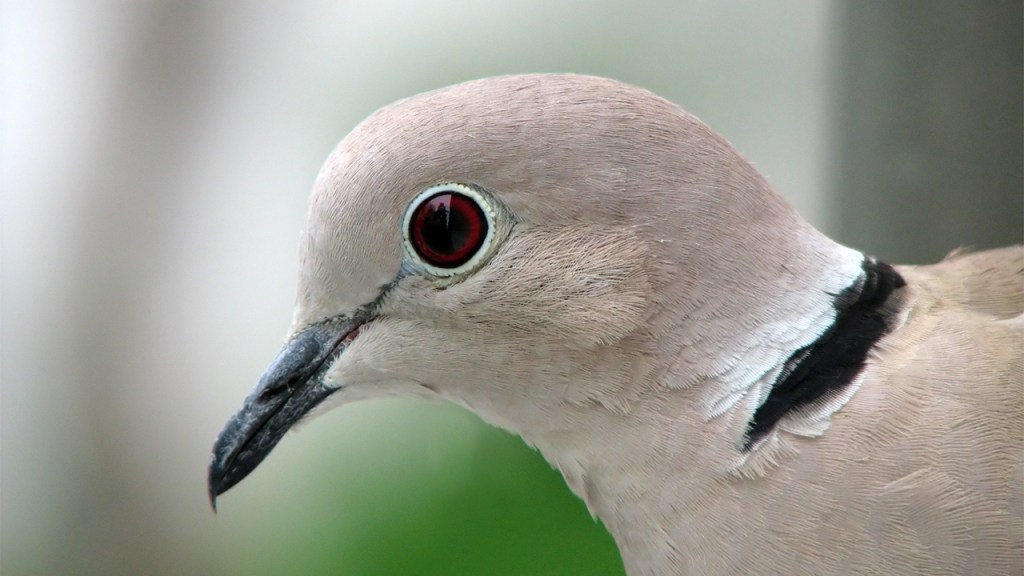The Great Backyard Bird Count (GBBC) — one of the largest citizen science initiatives in the world – annually documents a wide variety of bird population trends.
To my mind, one of the most interesting has been the dramatic spread of the non-native Eurasian collared dove across North America.
The GBBC asks citizen birders to watch an area for at least twenty minutes sometime during a four-day period in mid-February (this year’s count concluded yesterday), and record the birds they see.
Just ten years ago, seeing a Eurasian collared dove would have been a novelty. No more: the doves are now commonly reported by birders in most of the United States.
GBBC data tell the story of this rapid spread.
In the 1970s, the Eurasian collared dove was introduced to the Bahamas. By the early 1980s, the non-native birds made their way to South Florida, where they established populations. Then they began spreading north and west.
Their range appears to have expanded slowly at first. A look at GBBC reports from 1998 show a lot of sightings in Florida, with some birds reported in Texas, Alabama and Arkansas.
By 2001, the doves reached California.
Last year’s bird count results showed the Eurasian collared dove had colonized much of the country. It has not (yet) been reported in New England, but it has reached as far north as Alaska.
The GBBC’s video map dramatically illustrates this expansion.
In my state of Idaho, the doves were first recorded in 2005 by two backyard birders. In subsequent years, the bird was commonly reported in Idaho’s eastern corners. Last year, 132 GBBC participants reported 719 doves throughout the state.
I saw my first Eurasian collared dove in our backyard in 2008 – a banded bird that may have been an escaped pet. Last year, I began seeing the doves hanging around our neighborhood. This year was the first that I noted the species during my own participation in the Great Backyard Bird Count.
What’s going on here? Should conservationists be concerned about this spread?
Unlike some dove species, Eurasian collared doves aren’t migratory. However, they do readily expand into new suitable habitat. In fact, in their native Asia, Eurasian collared doves have been rapidly expanding their range as well – colonizing new countries every year.
The dove is one of those species that adapts well to humanity. The trees, power lines and bird feeders of suburbia provide perfect habitat. The Eurasian collared dove is almost always seen near homes and farms, not unbroken forest or prairie.
Research indicates it is not adversely affecting native mourning doves or other birds. It may simply be filling a new habitat niche created by suburban habitat. But it is still early in the spread.
Could Eurasian collared doves become an invasive threat? That remains to be seen.
Citizen science projects like the GBBC and another citizen initiative, Project FeederWatch, will help scientists continue to track the spread and impacts of the species. It will be interesting to learn what this year’s count found about Eurasian collared doves. If past years are any indication, their populations will likely have grown and spread into new areas of the country.
Have you seen Eurasian collared doves in your area? Have you noted other trends during your backyard bird counts? Let us know what you’re seeing!





Last year was the first time in forty years on our farm in the southern Willamette Valley that a pair of doves showed up and hung around. This year there are three pair. I thought they were mourning doves; I was curious if it had anything to do with global warming. Thanks for the information. I love them, they are so beautiful and their call is lovely. Others have noticed them all over Eugene.
When I first moved to Lewiston, Idaho six years ago, mourning doves dominated the scene almost exclusively. Now the collared doves are as common as the mourning. I often hear both species cooing at the same time. They seem to occupy slightly different habitats, and get along fairly well,at least in my observations.
I work on the 4th floor of a building near downtown Billings, MT. There is a tall spruce tree right outside my window, and a 2 foot ledge at my window that window washers walk on. A pair of eurasian collared doves have built a nest in the spruce tree They commonly land on the ledge before flying into the nest. This means they are landing within 2 ft of the window. I have had a great view of their nest building.
I have a single pair of Eurasian Doves at my feeder almost daily. At first I could not identify them as they were very timid. Then, through field glasses I saw the distinctive dark half moon mark on the back of the neck and the lightly colored tail feather tips. Their size too is larger than the mourning doves that regularly visit the feeding area.
i have a pair that comes to my backyard feeder every day morning and evening
Eurasian doves made nest on my patio in one of my potted plants. Laid 1st egg and 2 days later 2nd egg. Hatched simultaneously 2 days apart, the 18th and 20th of May. I go on the patio and water my plants with no problem. Amazing and they’re so peaceful.
They have shown up in my feeders this spring in port orchard,wa. Yesterday there were at least a dozen in each of my 2 large feeders.
They wiped out the seed leaving nothing for the rest of our birds.
I saw a pair of them this morning at 11:30 a.m, May 21, 2016. I didn’t know what they were. They were bigger than the quail I see around my place. I tried to get a picture of them, but by the time I found my phone they had absconded. Grey with a black ring around their necks. I live at 4,000 ft. in the mountains 60 miles east of San Diego, CA., near the little hamlet of Tierra Del Sol. It’s high desert here with chapparal covered ridges all around. I have a lot of crows, and jays, and some red-tailed hawks. Occasionally a covey of quail will pass through and I will see one or two road-runners each year. There are also lots of smaller birds that I don’t know the names of.
We live in northern New Mexico near Los Alamos. We began seeing these doves 4 years ago and in the past 2 years the numbers have exploded here. They have run out virtually all the white wing and mourning doves we had.
I feed a lot of birds and we usually have junkos, stellar jays, grosbeaks and quail at our feeders s well as rabbits. Since the collared doves arrived the quail are rarely seen and even the rabbits are having trouble getting corn and milo at their feeder.
Anyone who thinks these birds are good needs to rethink their position.
I am new to bird watching and new to our present location. we have several eurasian doves living arounf our home here in WEstbank BC (west Kelowna bc). Maybe several is an exageration, but there are for sure a pair of them cooing very regularly and clearly. We have trees both decidious and coniferous plus a waterway . I have identified them mainly by their collar on the nape of the neck.
Hi Matt. I Live in Stoneham Massachusettes and today when I walked out my back door, I Saw the Eurasian Native Dove Sitting right behind my back door on the corner of my room. I thought he was stuck, so I grabbed a stool and when I stool up, he flew away, but not very far, just 2 feet away on the other roof just staring at me….so I looked inside that corner where I thought he was stuck, and sure enough,I saw a small nest with an egg! As soon as I came back in. she flew back to her corner to nestle her egg. This spot she is nestled in is literally right behind my back door and just a couple feet up. I just don’t want to frighten her overtime we walk out the back door. She is really beautiful. We went sure what kind of bird at first, and it was my mom that said it looked like a dove, but not your typically white dove…..So my daughter looked it up and sure enough,there was the spit image of the Eurasian Native Doe. Identical photo. What should we do? Should we just leave it. We don’t mind it being there at all. ITS KIND OF FASCINATING!!! Whats your opinion please?
Pair of collared doves (calling coo coo coo) I Franklin drive Pismo beach CA. 21st April 2016.
Mating pair of collared doves in Lafayette Park in San Francisco, CA April 2016. Not seen here before. Several pairs of mourning doves have been nesting here for several years
Just saw two garden collared doves in my yard in Western Washington. Had no idea what they were. Thanks for the info.
Just yesterday, a pair of these beauties landed on my feeder tree and stayed about 20 minutes. Hope to see them again today. Location, Germantown, Tennessee.